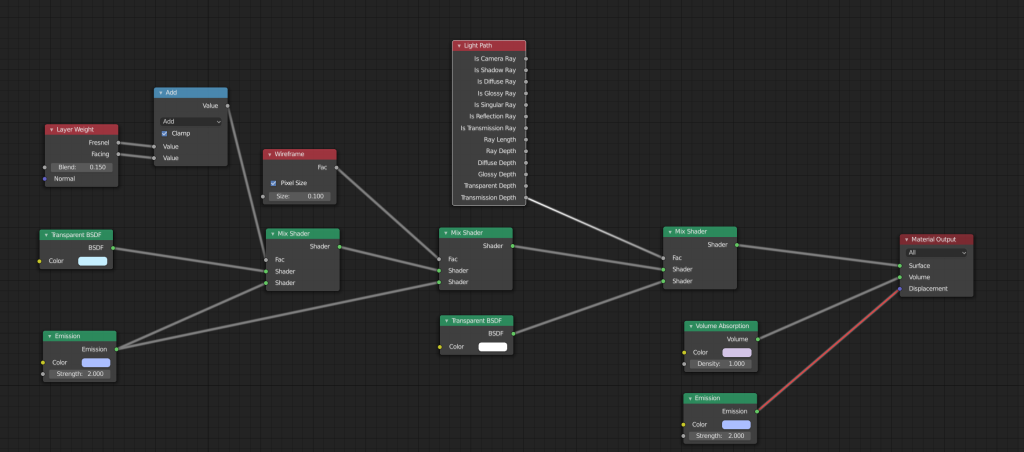3D AR Modeling: Tips and tricks for creation and utilization
by Hunter Pendleton, University of Missouri student
Augmented reality is the synthesis between real and computer-generated images to create a composite that is somewhere in between, blending reality and fiction to compose unique interactive experiences.
Many people may know the common application of AR through apps like Facebook, Instagram and Snapchat that superimpose face filters. However, the scope of AR ranges far more widely. Journalists can harness the power of AR and 3D modeling to create experiences for readers to explore and enhance their understanding of a story or issue.
While this prospect is exciting, it’s very easy to become overwhelmed at the thought of creating AR and 3D modeling and the subsequent application for readers.
At first glance, software like Spark AR (which we used to create the Academic Hall experience) and Blender (an open-sourced 3D modeling and animation platform) can be intimidating. But with some preparation and patience, it’s not as difficult as it seems.

With that in mind, here are some tips to get you started in AR 3D model creation:
1.) Learn the terminology
It can seem intimidating, but some augmented reality software is essentially just a 3D version of any type of photo and video editing software (ie. Photoshop, Premiere Pro, Final Cut, etc.) that you may have used in the past. It can be tempting to give up when you see words and phrases like “nodes,” “materials,” “texturing,” “plane tracking,” but just past the surface, these are not complex concepts. In fact, most of the time, they’re exactly what they sound like. Becoming familiar with these may seem like just an extra step but will actually save you time in the long run. Once you get the terminology down, everything else will follow.
Here’s a little cheat sheet:
Nodes: processing blocks that can be chained together to create effects on materials and textures in a model or animation.
Texturing: creating colors and layers of opacity to make a 3D model look realistic
Materials: In addition to texturing, using materials helps simulate how things look to a much higher extent (ex. things like fine hair, sandpaper, etc.)
Plane tracking: a tool within augmented reality software that forces a 3D object to stick to a plane, most commonly the ground, thus tethering it to reality.
2.) 3D Object libraries online are your friend
Especially for novices in 3D modeling, creating an object from scratch can be daunting and time-consuming. There are hundreds of 3D modeling libraries online (for this the Academic Hall project, I used Sketchfab) where you can either download for free, or license individually, and use for a variety of purposes.
Unless you need a hyper-specific object, most of the time you’ll be able to find something you can use in one of these libraries and save yourself hours of work while simultaneously supporting 3D artists (just make sure to give them credit and/or pay licensing when needed.) For this project, I adapted a version of Kate Punenko’s United States Capitol.
3.) Save in diverse ways, and save often
Most of this software is CPU (your computer’s central processor) heavy, meaning there’s a decent chance that unless you have 32 gigs of RAM, your computer may freeze or crash in the middle of a session. Saving often is essential. Also save multiple versions of a project file in multiple locations, as there is a limited number of recent edits stored in the software (ie. there is only a certain amount of times you can undo something before the software forgets it, and your previous edits are lost). Saving multiple versions of the file at multiple stages means you can work around this limitation, and revisit different iterations of the project as you progress.
4.) When in doubt, don’t be afraid to go online
For most people, software like Spark AR and Blender are completely new programs with new tools and terminology to get a grasp on. Luckily, there’s a whole host of communities and tutorials online from experts that can provide guidance, whether it is a question about aesthetics or on file exports. YouTube tutorials, Blender forums, Spark AR Learning pages, and countless other sites will give you the expertise of a seasoned veteran and will take even a beginner’s abilities to that of a professional in no time.
5.) Above all, be creative
Augmented reality 3D Modeling, like any type of visually manipulative tool, has its limitations. Unlike 2D pictures and videos however, AR can transform physical landscapes in real time, create otherwise impossible experiences, and immerse users in unique and original scenes created by you and/or your newsroom. It will help to tell those stories that must be experienced, not just viewed or read.
Don’t let what you think is possible dictate the scope of your vision — seemingly anything you dream up can become reality in real time through the lens of a smart device with the right tools, resources and time.